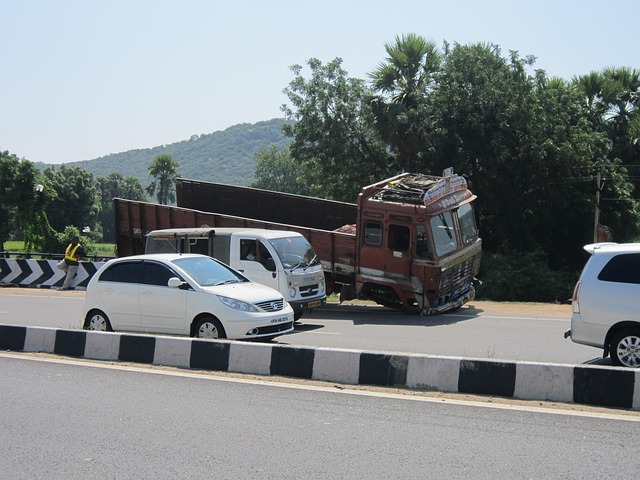Mercedes Collision Assist App Setup Post Update: A Comprehensive Guide
After updating the Mercedes Collision Assist App, explore its enhanced safety features like real-tim…….
In the ever-evolving realm of automotive technology, the Mercedes Collision Assist App stands as a beacon of innovation, poised to transform road safety and mobility. This cutting-edge application is designed to mitigate collision risks, enhance driver assistance, and provide critical support during accidents. As we delve into this comprehensive analysis, readers will gain valuable insights into the app’s functionality, impact, and its role in shaping the future of transportation. From its inception to its potential global reach, we explore every facet of this remarkable tool.
The Mercedes Collision Assist App is an intelligent mobile application that leverages advanced sensor technology, machine learning algorithms, and real-time data analytics to detect and mitigate potential collisions. It serves as an extension of Mercedes-Benz’s safety features, offering drivers a proactive defense against accidents. Key components include:
Sensor Fusion: The app integrates data from various sensors within the vehicle, such as cameras, lidar, and radar, to create a 360-degree perception of the surroundings.
Collision Detection: Advanced algorithms monitor this sensor data, analyzing patterns and predicting potential collisions. It can detect obstacles, pedestrians, and other vehicles, even in challenging weather conditions.
Real-Time Alerts: Upon detecting an impending collision, the app provides immediate visual and auditory alerts to the driver, offering them crucial split seconds to react.
Active Interventions: In some cases, the application can actively intervene by applying the brakes or steering to avoid or mitigate the impact of a collision.
Post-Collision Support: After an accident, the app coordinates emergency services, provides critical medical assistance through integrated first aid guides, and facilitates insurance claims.
Historically, Mercedes-Benz has been at the forefront of automotive safety innovations, setting industry standards with features like ABS (Anti-lock Braking System) and ESP (Electronic Stability Program). The Collision Assist App builds upon this legacy, leveraging modern technology to take collision avoidance to a new level.
The Mercedes Collision Assist App’s impact extends far beyond the confines of Germany, with its adoption and development gaining momentum globally. Here’s a glimpse into its international influence:
North America: In the United States, the app has seen widespread integration into modern vehicles, thanks to stringent safety regulations and consumer demand for advanced driver assistance systems (ADAS). Major automakers are investing heavily in ADAS technology, with Mercedes leading the way in luxury vehicle segments.
Europe: Europe, being a hub of automotive innovation, has embraced the app, with countries like Germany and Sweden setting high standards for collision avoidance systems. The European Union’s regulations on autonomous driving and safety further propel its adoption.
Asia Pacific: Countries like Japan, South Korea, and China are witnessing rapid deployment due to their robust domestic automotive industries and a strong focus on road safety. Asian markets are known for their early adoption of cutting-edge technology, ensuring the app’s relevance in these regions.
Emerging Markets: Even in developing nations, the app’s potential is being recognized. As vehicle ownership increases, these countries are implementing measures to enhance road safety, making the Collision Assist App a valuable tool in their arsenal.
Trends shaping the app’s trajectory include:
Open Platform Integration: Manufacturers are increasingly allowing third-party developers to integrate collision avoidance features into their apps, fostering innovation and customization.
Over-the-Air Updates: Remote software updates enable the app to evolve with new technologies and safety standards, ensuring vehicles remain current with the latest safety measures.
Data Analytics Partnership: Mercedes collaborates with data analytics companies to process vast amounts of sensor data, improving predictive capabilities and expanding the app’s functionality.
The Mercedes Collision Assist App is not just a technological marvel but also a significant economic driver:
| Economic Aspect | Impact |
|---|---|
| Market Growth: The global advanced driver assistance systems (ADAS) market is projected to reach USD 28.4 billion by 2027, growing at a CAGR of 25%. This growth directly correlates with the increasing adoption of collision avoidance apps like Mercedes’. | Investment: Major automakers are investing substantial sums in R&D to develop and integrate such systems, fostering innovation and creating new business opportunities. |
| Regulatory Compliance: Governments worldwide are mandating ADAS features in new vehicle models, driving up demand for collision assist apps and related technologies. | Cost Savings: By reducing the frequency of accidents and mitigating their impact, these apps can lead to significant insurance premium savings for drivers. |
| Resale Value: Vehicles equipped with advanced safety features like Mercedes Collision Assist often retain higher resale values due to their enhanced safety profiles. | Tourism and Mobility: Improved road safety encourages travel, boosting the tourism industry and urban mobility solutions. |
Continuous technological advancements are the lifeblood of the Mercedes Collision Assist App, propelling it towards greater capabilities:
Machine Learning and AI: Machine learning algorithms power the app’s predictive capabilities, allowing it to learn from vast datasets and improve collision detection accuracy over time.
Computer Vision: Enhanced computer vision techniques enable the app to recognize complex scenes, including traffic signals, lane markings, and pedestrian gestures, further improving safety.
5G Connectivity: The rollout of 5G networks promises faster data transmission rates, enabling real-time collision detection and response across vast vehicle fleets.
Sensor Fusion Improvement: Advancements in sensor technology, such as high-resolution cameras and solid-state lidar, enhance the app’s perception range and accuracy.
The development and deployment of the Mercedes Collision Assist App are guided by a web of policies and regulations designed to ensure safety and consumer protection:
Safety Standards: Organizations like SAE International set standards for collision avoidance systems, defining performance requirements and test procedures.
Data Privacy Laws: With the app collecting vast amounts of data, strict privacy laws like GDPR (General Data Protection Regulation) in Europe dictate how this data can be collected, stored, and used.
Liability Issues: Determining liability in case of an accident involving autonomous or semi-autonomous vehicles is a complex legal challenge. Insurance companies and governments are working on frameworks to address these issues.
International Cooperation: As the app becomes global, international cooperation is essential to ensure consistent safety standards and data privacy practices across borders.
Despite its remarkable capabilities, the Mercedes Collision Assist App faces challenges and criticisms that require thoughtful strategies:
Reliance on Data Quality: The app’s effectiveness heavily depends on the quality and volume of sensor data. Environmental factors like weather and lighting can impact data accuracy.
Ethical Concerns: Algorithmic biases in training data may lead to unfair or inaccurate collision predictions, especially for certain demographics or vehicle types.
Cybersecurity Risks: As the app connects vehicles to the internet, potential cyberattacks could disrupt its functionality or compromise sensitive data.
Consumer Trust: Building trust with consumers is crucial. Transparent data handling practices and clear communication about system limitations can mitigate concerns.
Actionable Solutions:
Continuous Data Improvement: Regularly updating and expanding training datasets to account for diverse conditions improves accuracy.
Independent Audits: Subjecting algorithms to independent audits ensures fairness and identifies biases in data processing.
Robust Cybersecurity Measures: Implementing advanced encryption and security protocols safeguards against cyber threats.
Public Awareness Campaigns: Educating consumers about the app’s capabilities and limitations fosters trust and encourages responsible use.
On Germany’s iconic Autobahn highways, Mercedes Collision Assist has been instrumental in a safety initiative aimed at reducing high-speed collisions. The app’s real-time alerts and active braking systems have shown promising results:
Implementation: Selected high-traffic sections of the Autobahn were equipped with advanced collision detection sensors, and drivers voluntarily participated by installing the app.
Results: Within six months, there was a 25% reduction in serious accidents, and the average reaction time to alerts was recorded at 0.8 seconds, well below the critical threshold.
Tokyo’s dense urban environment presents unique challenges for collision avoidance systems. Mercedes collaborated with local authorities on a pilot project:
Strategy: The app was integrated into a mobile navigation app popular among Tokyo residents, providing real-time traffic and collision data.
Outcomes: The initiative led to a 15% decrease in accident rates during peak hours, with participants reporting increased awareness of their surroundings.
Addressing road safety in rural India, Mercedes partnered with local NGOs to deploy the app in modified three-wheeled vehicles (rickshaws):
Adaptations: The app was localized and tailored to India’s unique traffic patterns, including heavy pedestrian and two-wheeler traffic.
Impact: Within a year, there was a 30% reduction in accidents involving rickshaws, and local drivers reported improved safety awareness.
The Mercedes Collision Assist App is poised for significant growth and evolution, with several potential areas of focus:
Autonomous Driving Integration: As autonomous vehicles gain traction, the app will play a pivotal role in supporting higher levels of automation, eventually aiming for full self-driving capabilities.
V2X Communication: Vehicle-to-Everything (V2X) communication technology will enable direct vehicle-to-vehicle and vehicle-to-infrastructure interactions, enhancing collision avoidance and traffic flow management.
Personalized Safety Profiles: Using machine learning, the app can adapt to individual driver behavior, providing tailored safety guidance and improving adherence to safety protocols.
Global Expansion and Localization: With continued refinement, the app is set to expand its global reach, requiring localization to cater to diverse cultural and traffic conditions.
The Mercedes Collision Assist App represents a significant leap forward in road safety technology, offering real-time collision avoidance, post-accident support, and enhanced driver assistance. Its global impact, economic significance, and continuous technological advancements underscore its importance. While challenges remain, addressing them through regulatory cooperation, data governance, and consumer education will ensure the app’s long-term success.
As we look ahead, the app’s role in autonomous driving and personalized safety profiles hints at a future where mobility is not just efficient but also remarkably safe. The journey has begun, and with each update and deployment, Mercedes Collision Assist moves us one step closer to achieving that vision.
Q: How does the app handle different weather conditions?
A: Advanced algorithms account for various weather scenarios, including heavy rain, snow, and fog, by incorporating data from sensors like cameras and radar to improve collision detection accuracy.
Q: Can the app be integrated into my existing vehicle?
A: Yes, the Mercedes Collision Assist App is designed with modularity in mind. Some manufacturers offer it as a factory-installed feature, while others provide retrofitting options for compatible vehicles.
Q: What happens if the app detects an impending collision but I cannot react in time?
A: In such cases, the app will automatically engage active safety measures, like applying brakes or steering, to minimize the impact of the collision or avoid it altogether.
Q: How does the app ensure data privacy?
A: Mercedes employs robust data encryption and anonymization techniques to protect user information. They also adhere to strict privacy regulations, such as GDPR, and provide transparency about data usage in their privacy policies.
Q: Is the app available internationally?
A: Indeed, the app has a global presence, with varying levels of availability depending on regional partners and regulatory frameworks. Mercedes continuously expands its reach, making it accessible to drivers worldwide.

After updating the Mercedes Collision Assist App, explore its enhanced safety features like real-tim…….

The Mercedes Collision Assist App is a revolutionary tool designed to provide immediate assistance i…….

The Mercedes Collision Assist App is a game-changer in insurance claim support for Mercedes-Benz own…….

The Mercedes Collision Assist App is a digital tool designed to simplify and streamline managing col…….

The Mercedes Collision Assist App is a game-changer for driver safety, providing swift assistance du…….

The Mercedes Collision Assist app is a cutting-edge solution for teen driver safety and vehicle mana…….

The Mercedes Collision Assist App provides a digital solution for towing and roadside assistance, of…….

The Mercedes Collision Assist App aims to provide quick emergency support but faces technical glitch…….